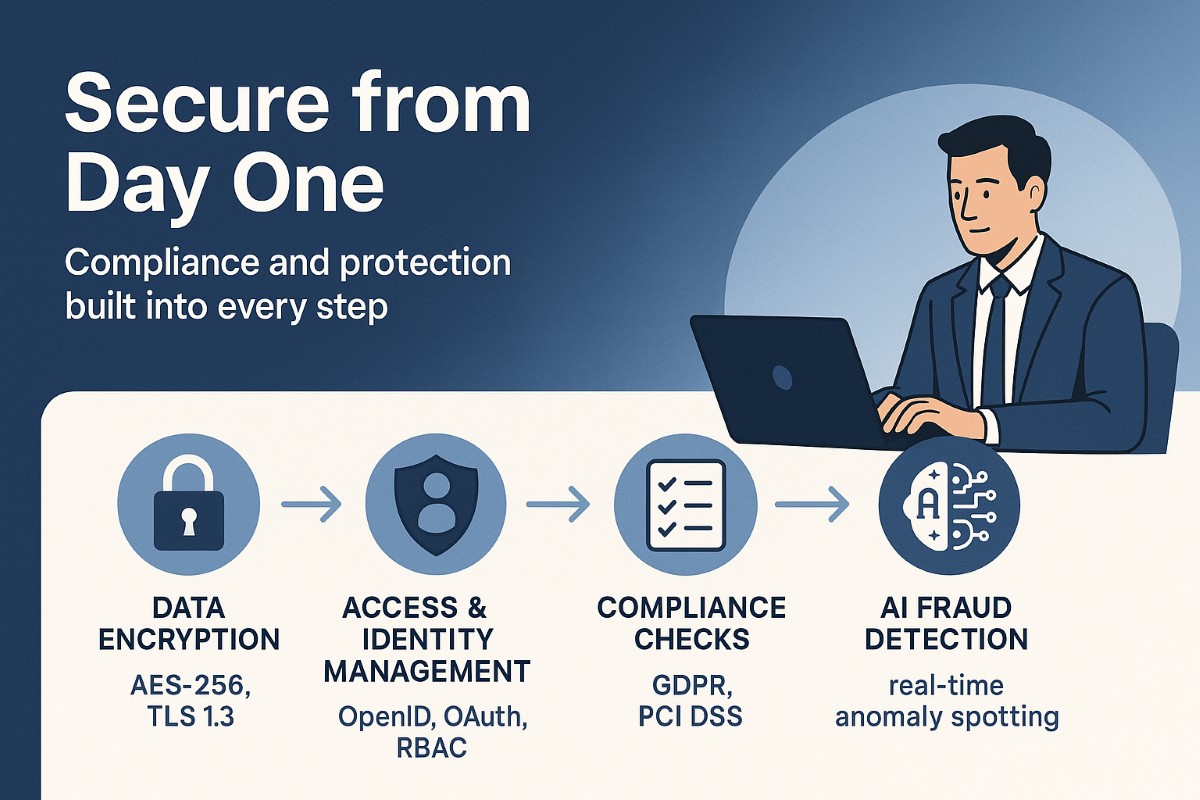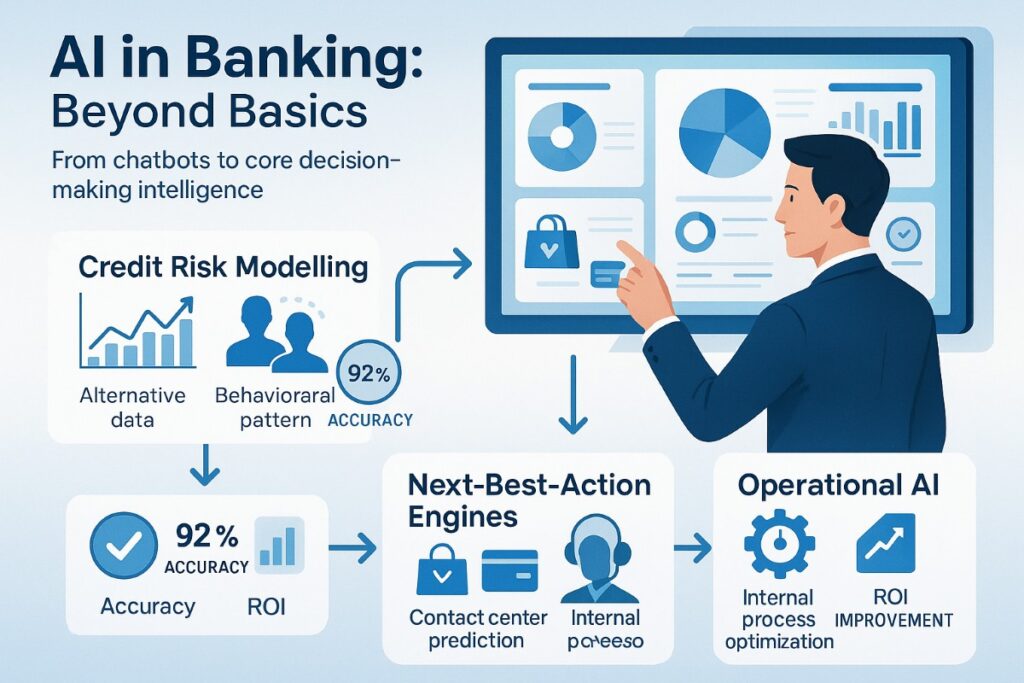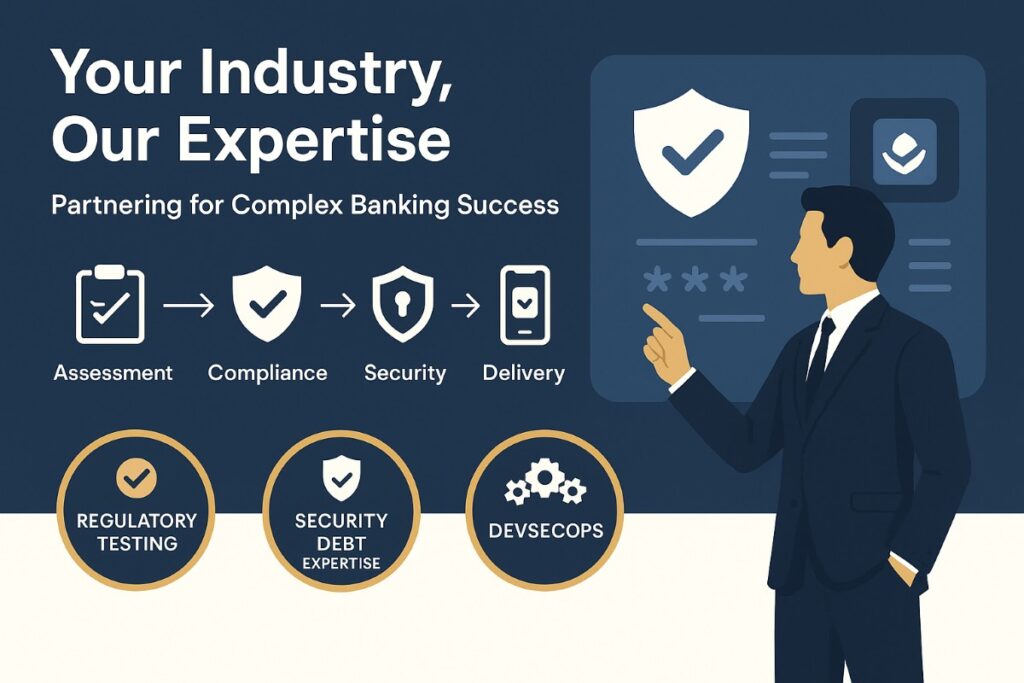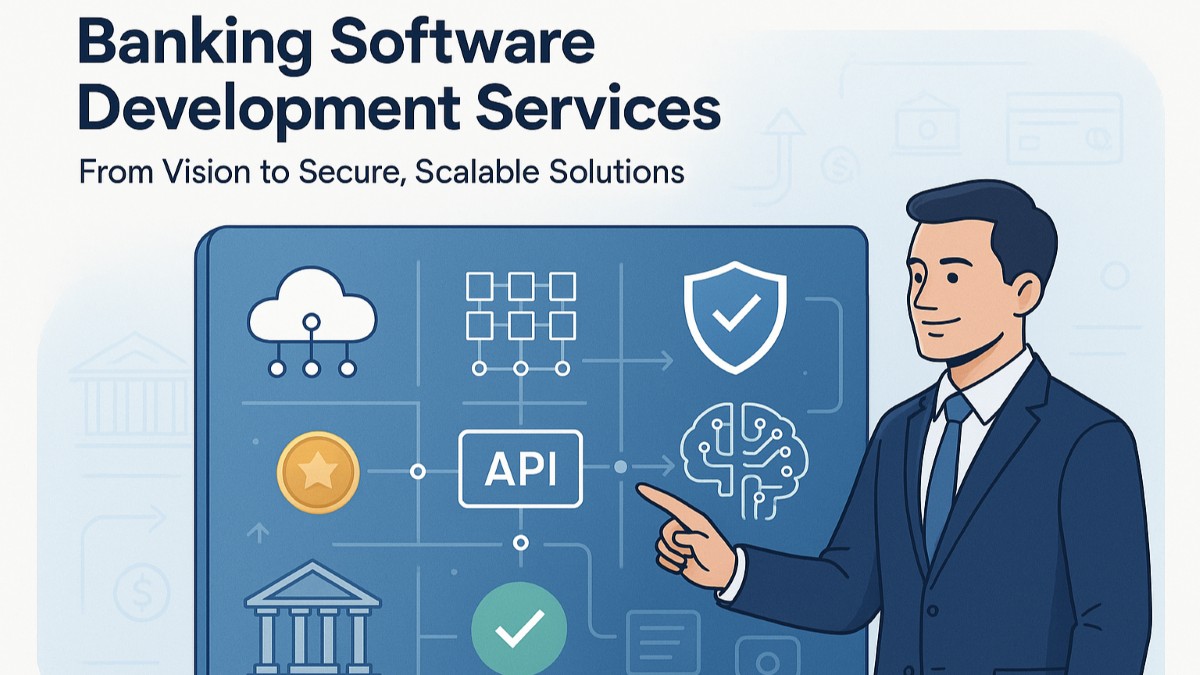Building from Concept to Competitive Edge
Every initiative and services regarding banking software development starts with a vision. However with a perfect strategy, even the most creative concept can collapse under real-world problems. Experienced institutions realize that speed alone does not just guarantee expected outcomes. The correct challenge exists in creating a fine balance between time-to-market with compliance, stability, and security.
Prominent banking software companies understand that success is seldom defined by the speed with which you launch. Even experienced companies face a lot of repetitive challenges: incorporating with legacy systems, staying up to date with evolving regulatory needs, and predicting and thwarting advanced cyber threats. Solutions that ignore these factors can turn into technical debt within a year.
A modern approach requires teams to combine modular architecture, an API-first strategy, and security by design. A strong foundation not only expedites time-to-market but also makes sure that the product remains feasible in evolving conditions.
Architectural Details That Shape Success
Once your foundation is in place, architecture becomes the next vital decision. The pattern you choose will determine how fast you can adapt, scale, and incorporate future services. In regulated industries like banking, that choice must reflect not only technical goals but also compliance constraints.
The ongoing shift toward event-based architecture and microservices is now standard for banking software organizations that prioritize on innovation and scalability. However, the decision of architectural patterns must be in line with the compliance needs and business model.
| Architectural Pattern | Use Case | Key Technologies |
| Microservices + Event-Driven | Frequent feature releases without full system downtime | Kafka, RabbitMQ, AWS EventBridge |
| BaaS Enablement | Monetizing APIs and offering white-label services | Apigee, Kong, Tyk |
| Hybrid Cloud with On-Prem Zones | Balancing agility with sensitive data storage on-prem | AWS, Azure Stack, Kubernetes |
Compliance & Security at the Core

No matter how robust and innovative your architecture is, it will amount to nothing if your system contains vulnerabilities. In the financial industry, security must not be treated as an afterthought or a layer to be added at the last. It must be a part of every decision you will take from the first day itself. Sophisticated finance software development companies create solutions with resilience and compliance in mind, making sure that the platforms can protect itself from regulatory scrutiny and cyber threats.
A robust security strategy must involve the following:
- Encryption of Data: AES-256 at best, TLS 1.3 in transit.
- Access & Identity Management: OpenID Connect, OAuth 2.0, RBAC with API-level granularity.
- Consistent Compliance: Automated code scanning and configurations for GDPR and PCI DSS compliance.
- AI-based Prevention of Fraud: Real-time detection of anomalies via trained models.
The Role of AI in Banking: Going Beyond MVP Stage

For many years, Artificial Intelligence in banking implied limited personalization pilots and proof-of-concept chatbots. Nowadays, companies have gone beyond experimentation stage and are implementing AI at the core of their processes. This evolution is based on clear Return on Investment, structured data pipelines, and regulatory acceptance of AI-based decision making based on clear insights and explanation.
The role of Artificial Intelligence in banking software has gone beyond conventional chatbots. The advanced players today are now utilizing:
- Credit Risk Modelling as per the alternative data sources and behavioral patterns.
- Next-Best-Action Engines providing helpful product recommendations in real-time.
- Operational Artificial Intelligence to predict demands of contact center and streamline internal processes.
Integration Strategy: The Determining Factor
Even the most sophisticated AI models and secure architectures will fall short if the system is unable to integrate with the present infrastructure smoothly. In the context of banking, integration can be chosen as a technical afterthought. It is a core function critical to businesses that ensures agility, minimizes downtime, and open up new opportunities for partnerships.
Integration points often managed by a banking software development services provider involve the following aspects:
- Core Banking: Flexcube, Temenos, Finacle — via ESP and API wrappers.
- Payment Networks: SEPA, SWIFT, Faster Payments — via certified gateways.
- Fintech APIs: Tink, Plaid, Stripe, Currencycloud
Tracking Success in Banking Software
Once the system is live, measurement turns out to be a determining factor. In experienced organizations, success is not just related to on-time delivery. It is about lasting impact and accurate delivery. This means monitoring technical, operational, and adoption metrics to make sure that the platform evolves effectively.
| Key Performance Indicators | Why Are They Important? |
| MTTR | Reduces downtime at the time of incidents. |
| Frequency of Deployment | Resonates CI/CD Maturity. |
| Rate of Digital Adoption | Accurate Indicator of Customer Value. |
| API Uptime SLA Compliance | Vital for integrations and BaaS. |
Selecting Development Partner That Understands the Complexity of Your Industry

Irrespective of how sophisticated your internal team gets, the best partner can figure out whether your strategy is likely to fail or succeed. The most effective financial software development organizations integrate deep knowledge about the domain with effective technical execution.
Choosing a partner for a sophisticated banking project is a complex process that goes beyond reviewing their portfolio. It is related to assessing their capability in an environment where stakes and demands are high.
- Effective production-level banking projects.
- Experience in handling security debt.
- In-house engineers that can manage compliance.
- Complete support for automated regulatory testing and DevSecOps.
Conclusion
In evolving banking landscape, banking software development solutions has gone beyond delivering a working application. The development process is now a lot more about developing robust solution that can incorporate with any API, adhere to regulations, scare to large user base, and ensure space for creativity and innovation.
The top banking software companies stand out because they combine technical expertise with an understanding of how the financial sector really operates, enabling clients to lead, not just keep up.




%201.png)

%201.png)

%201.png)

